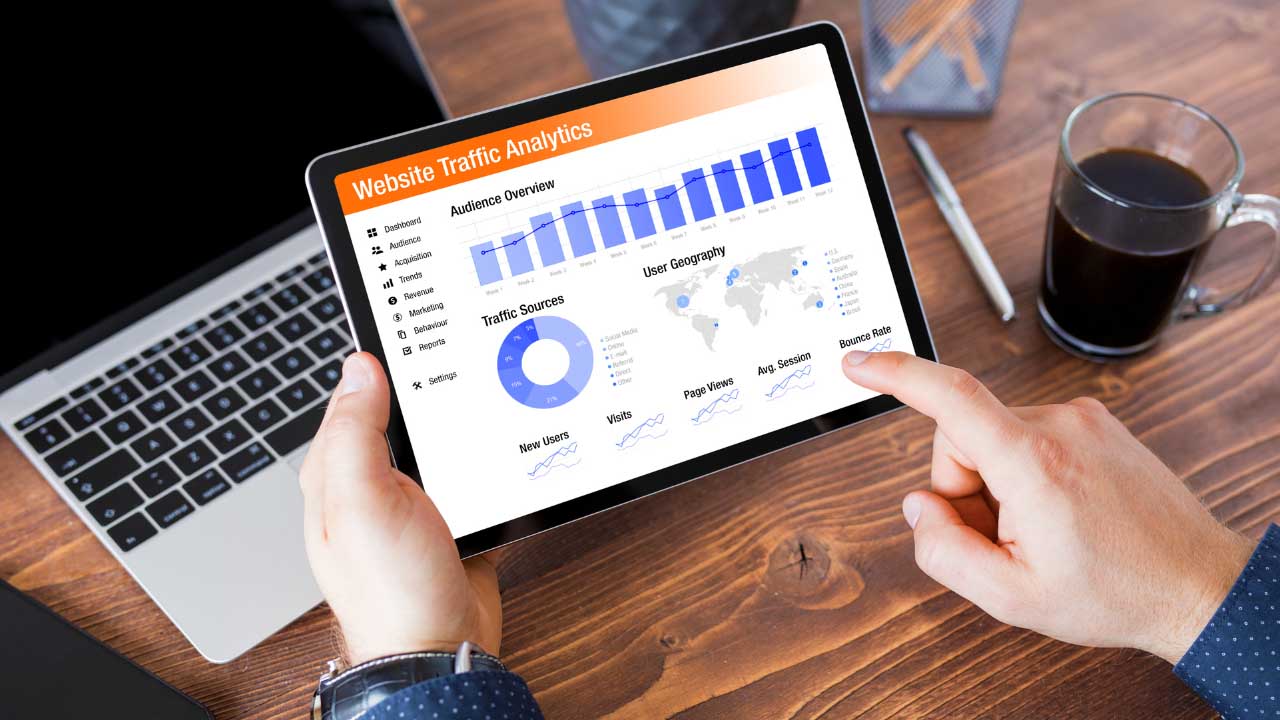Introduction
In today's digital landscape, online advertising has become a crucial element for businesses to thrive and succeed. Among the various online advertising platforms available, Google Ads stands out as one of the most effective and widely used tools. This blog post explores the numerous benefits that Google Ads brings to businesses of all sizes and industries.
A. Definition of Google Ads
Google Ads, formerly known as Google AdWords, is an online advertising platform provided by Google. It allows businesses to create and display ads across Google's vast network, including search results, websites, mobile apps, and videos. By leveraging Google Ads, businesses can effectively reach their target audience, increase brand visibility, and drive valuable traffic to their websites.
B. Importance of online advertising for businesses
In today's digital era, consumers increasingly rely on the internet to discover products, services, and information. This shift in consumer behavior highlights the significance of online advertising for businesses. By harnessing the power of online advertising platforms like Google Ads, businesses can tap into a vast audience, enhance their online presence, and ultimately drive growth and profitability. Now, let's delve into the specific benefits that Google Ads offers to businesses.
[caption id="attachment_183218" align="alignnone" width="1280"] Definition of Google Ads[/caption]
Definition of Google Ads[/caption]
Also Read This: Learn to Make Handmade Rings with Easy Videos on Dailymotion
Increased Visibility and Reach
Targeted advertising
One of the major benefits of Google Ads is the ability to targFollet specific audiences with precision. Through keyword targeting, businesses can ensure their ads are displayed to users who are actively searching for relevant products or services. Additionally, Google Ads provides advanced targeting options such as demographic targeting, device targeting, and even remarketing, allowing businesses to reach the right audience at the right time.
Wide audience reach
Google is the most widely used search engine globally, with billions of searches performed every day. By advertising on Google Ads, businesses can tap into this massive audience and showcase their products or services to a vast number of potential customers. Whether it's through search ads, display ads, or video ads, Google Ads offers a reach that extends across various platforms, including search results pages, YouTube, Gmail, and millions of partner websites within the Google Display Network.
Ad placement options
With Google Ads, businesses have control over where their ads are displayed. They can choose to appear in search results when users search for specific keywords, or they can opt for display ads that appear on relevant websites within the Google Display Network. Furthermore, Google Ads provides options for mobile advertising, video advertising on YouTube, and even app advertising, enabling businesses to reach their target audience in different digital contexts.
By leveraging the targeted advertising capabilities, wide audience reach, and versatile ad placement options of Google Ads, businesses can significantly enhance their visibility and expand their reach to potential customers. In the next section, we will explore the cost-effectiveness of using Google Ads for advertising purposes.
[caption id="attachment_183219" align="alignnone" width="1280"] Increased Visibility and Reach[/caption]
Increased Visibility and Reach[/caption]
Also Read This: A Comprehensive Guide to Dailymotion's Red Band Features and Their Functionality
Cost-Effectiveness
Pay-per-click (PPC) model
Google Ads operates on a pay-per-click (PPC) model, which means businesses only pay when someone clicks on their ads. This model ensures that businesses are only charged for actual engagement with their ads, making it a cost-effective advertising solution. Compared to traditional advertising methods where businesses pay upfront for ad placement without guaranteeing results, the PPC model of Google Ads allows businesses to allocate their budget more efficiently and maximize their return on investment (ROI).
Budget control
Google Ads provides businesses with complete control over their advertising budget. They can set daily or monthly budgets according to their financial capabilities and marketing objectives. Additionally, Google Ads allows businesses to adjust their budget and bids in real-time, giving them the flexibility to optimize their campaigns based on performance and market conditions. This level of control ensures that businesses have a clear understanding of their advertising expenses and can make data-driven decisions to maximize their budget efficiency.
Measurable results
Unlike traditional advertising methods, Google Ads offers extensive measurement and tracking capabilities. Businesses can access detailed analytics and performance metrics to evaluate the effectiveness of their campaigns. They can track key metrics such as impressions, clicks, conversions, and cost per conversion, enabling them to assess the ROI of their advertising efforts accurately. This data-driven approach allows businesses to refine their strategies, allocate budget to high-performing campaigns, and continuously optimize their advertising to achieve better results over time.
By leveraging the PPC model, budget control features, and robust measurement tools of Google Ads, businesses can ensure that their advertising efforts are cost-effective and deliver tangible results. In the next section, we will explore the enhanced targeting and customization options that Google Ads offers to businesses.
[caption id="attachment_183220" align="alignnone" width="1280"] Cost-Effectiveness[/caption]
Cost-Effectiveness[/caption]
Also Read This: Mastering Title and Description Creation on Behance for Engaging Project Introductions
Enhanced Targeting and Customization
Demographic targeting
Google Ads provides businesses with the ability to target specific demographics, such as age, gender, household income, and more. This targeting feature allows businesses to tailor their ads to reach the most relevant audience for their products or services. By narrowing down their targeting parameters, businesses can increase the effectiveness of their campaigns and improve the overall return on investment.
Geographic targeting
Google Ads enables businesses to target specific geographic locations, ranging from countries and regions to cities and even custom-defined areas. This level of geographic targeting is particularly beneficial for local businesses looking to reach customers within their immediate vicinity. By tailoring their ads to specific locations, businesses can ensure their advertising efforts are relevant and impactful, reaching potential customers in the right geographical areas.
Ad extensions and formats
Google Ads offers a variety of ad extensions and formats that allow businesses to enhance their ads and provide additional information to users. Ad extensions, such as call extensions, sitelink extensions, and location extensions, enable businesses to include extra details, links, or contact information within their ads. This customization not only improves the visibility and click-through rates of ads but also provides users with more convenient ways to engage with businesses directly.
The enhanced targeting and customization options provided by Google Ads empower businesses to deliver highly tailored and personalized advertising experiences to their target audience. By reaching the right demographics, targeting specific geographic locations, and utilizing ad extensions, businesses can significantly improve the relevance and impact of their ads. In the next section, we will explore the remarketing opportunities offered by Google Ads.
[caption id="attachment_183221" align="alignnone" width="1280"] Enhanced Targeting and Customization[/caption]
Enhanced Targeting and Customization[/caption]
Also Read This: How Much YouTube Pays for 200k Views – Estimating Revenue for Mid-Sized Creators
Remarketing Opportunities
Reaching potential customers who have shown interest
Remarketing is a powerful feature of Google Ads that allows businesses to reconnect with users who have previously visited their website or interacted with their brand. By placing a remarketing tag on their website, businesses can create custom remarketing audiences and show tailored ads to these users as they browse other websites or use Google's partner platforms. Remarketing enables businesses to stay top-of-mind and re-engage with potential customers who have already expressed interest in their products or services.
Reinforcing brand awareness
Remarketing not only helps businesses reach potential customers who have shown interest but also reinforces brand awareness. By displaying targeted ads to previous website visitors, businesses can remind users about their brand, products, or special offers. This repeated exposure helps to build brand recognition, establish credibility, and increase the likelihood of conversions. Remarketing serves as a valuable tool for businesses to nurture leads and guide them towards making a purchase or taking a desired action.
The remarketing opportunities provided by Google Ads offer businesses a chance to re-engage with interested users, strengthen brand awareness, and ultimately increase conversions. By leveraging the power of remarketing, businesses can maximize the impact of their advertising efforts and convert users who have already shown a degree of interest. In the next section, we will explore the analytics and insights that Google Ads provides for campaign optimization.
(Note: Please note that remarketing practices should be carried out in compliance with applicable laws and regulations regarding user privacy and data protection.)
[caption id="attachment_183222" align="alignnone" width="1280"] Remarketing Opportunities[/caption]
Remarketing Opportunities[/caption]
Also Read This: Creating a moodboard on Behance
Analytics and Insights
Access to data and analytics
Google Ads provides businesses with a wealth of data and analytics to measure the performance of their campaigns. Businesses can access detailed information about impressions, clicks, conversions, click-through rates, and more. This data helps businesses understand the effectiveness of their ads, identify trends, and make informed decisions about their advertising strategies. The availability of real-time data empowers businesses to monitor and optimize their campaigns continuously.
Real-time campaign optimization
With the analytics and insights provided by Google Ads, businesses can make real-time adjustments to their campaigns for optimal performance. They can identify underperforming keywords, ads, or targeting parameters and make necessary changes to improve results. By constantly monitoring and optimizing their campaigns based on data-driven insights, businesses can maximize their return on investment and achieve better outcomes.
Google Ads' robust analytics and insights enable businesses to make data-driven decisions, refine their strategies, and continuously improve their advertising efforts. By leveraging this valuable information, businesses can optimize their campaigns, allocate budget more effectively, and ensure their ads are reaching the right audience at the right time. In the next section, we will explore the integration of Google Ads with other Google tools, enhancing the overall advertising experience.
(Note: When using analytics and data, it is important to adhere to relevant privacy laws and regulations and ensure the protection of user data.)
[caption id="attachment_183223" align="alignnone" width="1280"] Analytics and Insights[/caption]
Analytics and Insights[/caption]
Also Read This: Imago Stock Videos: Showcase Your Business
Integration with other Google Tools
Syncing with Google Analytics
Google Ads seamlessly integrates with Google Analytics, a powerful web analytics tool. By linking Google Ads and Google Analytics accounts, businesses gain access to additional insights and data about user behavior on their website. This integration allows businesses to track the entire customer journey, from ad click to website interaction and conversions. By leveraging the combined data from Google Ads and Google Analytics, businesses can gain a deeper understanding of their audience, optimize their campaigns, and make data-driven decisions to improve overall performance.
Collaboration with Google My Business
For businesses with a local presence, integrating Google Ads with Google My Business can be highly beneficial. Google My Business allows businesses to manage their online presence, including business information, reviews, and location data. By connecting Google Ads with Google My Business, businesses can create location extensions, which display additional information about their business alongside their ads. This integration enhances the visibility of businesses in local search results and increases the chances of attracting nearby customers.
The integration of Google Ads with other Google tools provides businesses with a comprehensive ecosystem to manage and optimize their advertising efforts. By leveraging the data and insights from Google Analytics and the local presence management of Google My Business, businesses can enhance their targeting, improve their visibility, and streamline their overall online marketing strategy. In the next section, we will explore the continuous improvement and flexibility that Google Ads offers to businesses.
(Note: It's important to set up and configure integrations correctly and ensure compliance with privacy and data protection regulations when linking accounts and sharing data between platforms.)
[caption id="attachment_183224" align="alignnone" width="1280"] Integration with other Google Tools[/caption]
Integration with other Google Tools[/caption]
Continuous Improvement and Flexibility
A/B testing
Google Ads allows businesses to run A/B tests to compare the performance of different ad variations. By creating multiple versions of ads with varying headlines, copy, or visuals, businesses can test which variations resonate best with their target audience. Through A/B testing, businesses can gather valuable data on what works and what doesn't, allowing them to optimize their campaigns and make informed decisions based on concrete results.
Ad scheduling and adjustments
Google Ads provides businesses with the flexibility to schedule their ads to appear at specific times of the day or days of the week. This feature is particularly useful for businesses targeting specific customer segments or operating in different time zones. By aligning their ad schedules with peak customer activity periods, businesses can maximize the visibility and impact of their ads while efficiently managing their budget.
Responsive and adaptive ad formats
Google Ads offers responsive ad formats that automatically adjust to fit different devices and ad placements. This flexibility ensures that businesses' ads are optimized for various screen sizes, including desktops, mobile devices, and tablets. By utilizing responsive ad formats, businesses can deliver a seamless and engaging ad experience to their audience, regardless of the device they are using.
The continuous improvement and flexibility offered by Google Ads enable businesses to refine their strategies, optimize their campaigns, and adapt to changing market dynamics. By leveraging A/B testing, ad scheduling, and adaptive ad formats, businesses can stay agile and responsive, ensuring that their advertising efforts yield optimal results. In the concluding section, we will recap the benefits of Google Ads for businesses and encourage their adoption.
(Note: It is recommended to monitor and evaluate the performance of ad variations, schedules, and formats to make informed decisions and ensure continuous improvement.)
[caption id="attachment_183225" align="alignnone" width="1280"] Continuous Improvement and Flexibility[/caption]
Continuous Improvement and Flexibility[/caption]
Conclusion
In conclusion, Google Ads is a powerful tool that offers numerous benefits for businesses of all sizes and industries. By leveraging its features, businesses can increase their online visibility, effectively target their audience, optimize their budget, and drive meaningful results. Embracing Google Ads can be a game-changer for businesses looking to thrive in the digital landscape and stay ahead of the competition.
